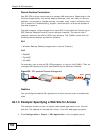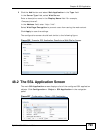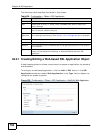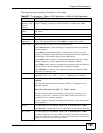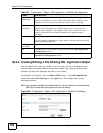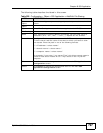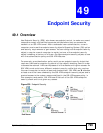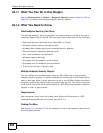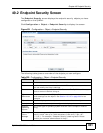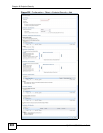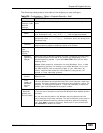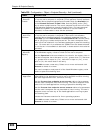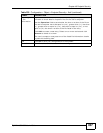
Chapter 49 Endpoint Security
ZyWALL USG 300 User’s Guide
800
49.1.1 What You Can Do in this Chapter
Use the Configuration > Object > Endpoint Security screens (Section 49.2 on
page 801) to create and manage endpoint security objects.
49.1.2 What You Need to Know
What Endpoint Security Can Check
The settings endpoint security can check vary depending on the OS of the user’s
computer. Depending on the OS, EPS can check user computers for the following:
• Operating System (Windows, Linux, Mac OSX, or others)
• Windows version and service pack version
• Windows Auto Update setting and installed security patches
• Personal firewall installation and activation
• Anti-virus installation and activation
• Windows registry settings
• Processes that the endpoint must execute
• Processes that the endpoint cannot execute
• The size and version of specific files
Multiple Endpoint Security Objects
You can configure an authentication policy or SSL VPN policy to use multiple
endpoint security objects. This allows checking of computers with different OSs or
security settings. When a client attempts to log in, the ZyWALL checks the client’s
computer against the endpoint security objects one-by-one. The client’s computer
must match one of the force authentication or SSL VPN policy’s endpoint security
objects in order to gain access.
Requirements
User computers must have Sun’s Java (Java Runtime Environment or ‘JRE’)
installed and enabled with a minimum version of 1.4.
Finding Out More
See Section 7.9 on page 155 for an example of how to use endpoint security and
authentication policies.



